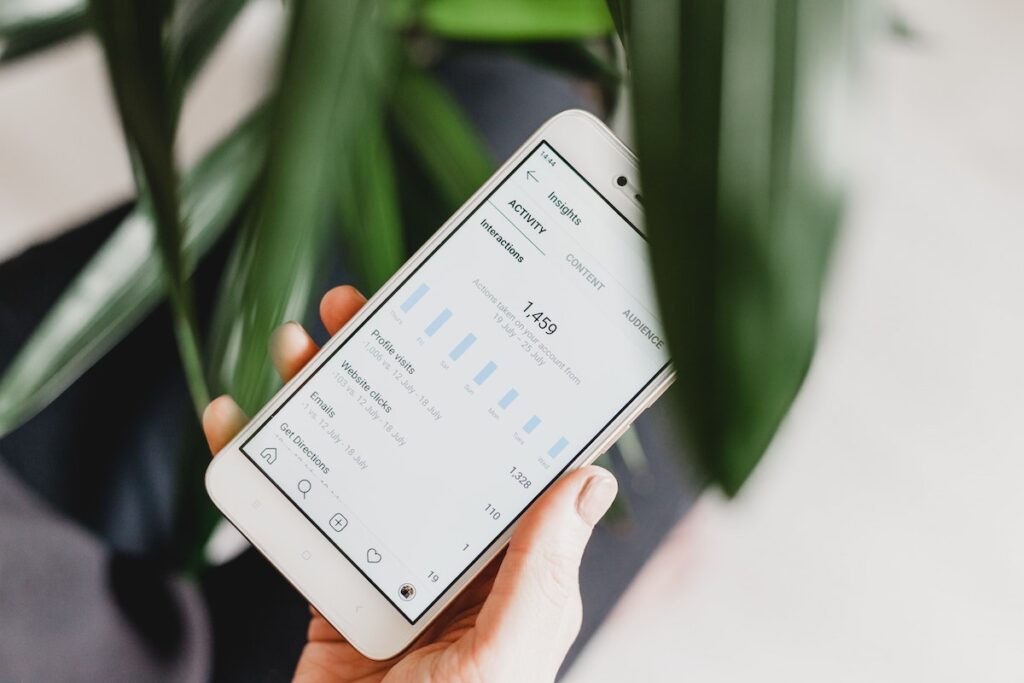Email marketing is still very much alive and well in 2020 despite the 2 million+ emails we all receive daily. *delete, delete, unsubscribe…* – And why do we say this?
“For every dollar spent on an email marketing campaign, you get a return on investment of 44 dollars.” And according to their report, there are no less than 72% B2B buyers that are willing to share useful content via email.
We know email marketing is extremely important to your business but can be a daunting task for most people to take on… the amount of information regarding email marketing strategies is never ending. To some, it sometimes feels overwhelming to think of all the different avenues you can take to create the most effective email marketing strategy with the highest ROI. But just remember that email is another touch point in which your audience becomes aware of your brand and starts to form an image of it.
That’s why we’ve created an easy-to-follow checklist of actionable items that you can incorporate into your email marketing strategy today. In return, it will either save time, money, brain power, and overall increase revenue to your business.
We’ll start with the basic email marketing strategies:
1. Understand Your Audience
This is one of the most fundamental strategies but something many marketers tend to forget. Understanding your audience means you’ve done a deep dive into who they are, and y’all are best friends now. Where do they live? What do they like? Demographic? What are they expecting or wanting out of your emails? How can you provide them with that?
Understanding your audience and their ever-changing needs is something a company must put at the forefront, and revisit every quarter. It allows you to personalize your content based on the verticals and demographics that you are targeting, and is in the foundation to marketing in general.
2. Headlines and Subheadings in Emails
Email marketing in 2020 works a lot like blog posts do. People are skimming to see if anything catches their eye and clicking on keywords that stand out to them.
Keeping your headings concise helps your audience better understand what the email is about thus leading to authority building and action.
 3. Incorporate Emails Into Your Sales Funnel
3. Incorporate Emails Into Your Sales Funnel
If you’re like most companies (I hope), you understand that you can’t just throw spaghetti on the wall and hope it sticks. You need a pan to cook it in, boiling water, and maybe a dash of salt. Integrating emails into your sales funnel helps to increase sales, brand awareness, and ultimately the return on investment through multiple touch points that keeps them moving and grooving.
Example sales funnel – Social media ad or promotion > landing page > email > email campaign > sale!
4. The Importance of Your Email List
Keeping your email list clean is extremely important. If you don’t, you might get marked as spam or go into your audience’s promotions or social inboxes, and never be seen again. Regularly cleaning your lists will help you stay out of the black hole that is the spam box but also keep the integrity of your brand alive and in good standing.
5. Always Be Testing – A/B Testing Emails
There is so much to learn from your audience and this is why hiring a email marketing analyst and expert is important. Like we mentioned before, your target audience is always growing and moving and changing their views. A/b testing allows you to go in the backend of your email marketing reports and platform and analyze their behaviors. Are they opening and clicking? Are we getting more clicks on red vs white? What time are they opening these emails? Are they using a mobile device or opening the email on their computers? Where are they in the buying process?
A/b testing gives you the insight you need to form a better understanding of behavior and the buying process. Always. Be. Testing.
6. Design a Clean, Eye-Catching Email
No one wants to read or even look at an email that doesn’t look aesthetically pleasing and scannable. If you have multiple font types, 10 different color themes, a ton of text in one area, no headings, ugly and low-quality pictures… you are doing it all wrong.
And that’s okay… kinda. But if you want to build and keep your audience interested, you need to either understand what works or hire someone that already does.
7. Organize Your Email Lists with Groups, Segments, and Tags
Groups are primarily for categorizing contacts when using a sign-up form or doing a bulk upload.
Segments are used to tie everything together; your contact merge data, your tags and groups can all be used together within a segment.
Tags allow you to add more information to your contact data that you wouldn’t necessarily have in your merge columns.
Doing this will allow you to better target your audience based on a certain criteria. You can break them down via opt-in forms, countries, programs, behaviors… the list goes on. It’s really up to you and how your business is set up that will determine how you want to organize your email lists.
8. Welcome Series Emails
A welcome series email drip campaign is a safe bet to incorporate into your email marketing plan. The email sequence gives people an insight into your business and what you provide, then gets leads excited to convert and buy.
• Email #1: Welcome and thank leads for joining your email list or for downloading your free guide to xyz.
• Email #2: Highlight popular customer products/programs to give your audience ideas of what you offer and what other people are buying into.
• Email #3: Highlight key product benefits and testimonials.
• Email #4: Introduce a special limited-time offer that’s available to first-time customers.
Set these emails to send a few days apart so there’s time for leads to open and read them. If leads buy something before the end of the welcome series, divert the email sequence to send them a thank-you email instead of the remaining nurture emails.
9. Nurture Series Emails
This is where segmentation comes into play. Based on the different groups you identify, create a series of seven to ten emails that share relevant product information that shows you understand your leads’ needs and have what they need. For leads who want to save money and experience value, your series can include the following:
• Email #1: Select product features and benefits
• Email #2: Reviews from current customers
• Email #3: Video of the product in use
• Email #4: Product updates and industry news
• Email #5: An introduction to special company programs that benefit the real-world community
• Email #6: Testimonials and customer spotlights
• Email #7: A coupon code
10. Abandon Cart Series Emails
In your email marketing tool, create a sequence that is triggered when prospects add products to their carts and don’t check out. Set up your sequence to send at least three emails:
• Email #1: Reminder of products in abandoned cart
• Email #2: Reminder of product benefits and features
• Email #3: Coupon code
11. Tips of the Week Emails
Tips of the Weeks emails are a good strategy to incorporate if your company is service-based. This weekly tips series gives people something to look forward to each week and adds value to your brand.
Some examples of ‘Tips of the Week’ emails include:
• Tips for workouts, healthy living, recipes
• Tips for mental health professionals to send to leads
• Tips that cover frequently asked questions on your platform or app
12. Email Newsletters
Weekly, bi-weekly or even monthly newsletters keep your audience engaged with what’s going on in the company, in the industry, and is a way to set the company up as an expert or thought leader in the industry.
You can incorporate giveaways, contests, collaborations, industry insight, promotions… whatever you want.
13. Create Workflows with Zapier
Thank you to the Zapier gods for this wonderful tool. If you’re not quite sure what Zapier is, it’s an automation tool that can be used to automate just about anything. Take your leads from Acuity Scheduling to Mailchimp, automatically update Google sheets from info forms, share recent blog posts directly to social, etc.
14. Connect Emails to a CRM for Your Sales Team
Again with Zapier – one incredibly helpful zap for your sales team is to directly link your emails and email platform to a CRM, which in turn adds to/continues the sales cycle. This way they know which emails your prospect has received and how they interacted with them, and have better insight into what they are interested in.
15. Create a Branding Guide
I mentioned in #6 that creating a clean, eye catching email goes a long way. This all comes back to branding. Having a thorough brand guide laid out for your company gives you the extra time to create copy or design the template given you already know the rest i.e. fonts, colors, brand voice, logo, etc.
Without a brand guide your products and marketing tactics will be all over the place. I once had a client that used probably 10 different colors throughout the email that didn’t coordinate in hue, cursive as the body of the email, and put a light pink font color over a white background. I immediately wrote him and gave him a bit of insight… there was no way I was going to allow him to make the same mistake again.
Helpful Tip – Incorporate your branding guide in your email platform. It will automatically save and be ready for when you design your next email.
16. Cross Promote Emails on Social Media
Building your email list so that you can create more touch points with your audience is the goal. Promoting your email newsletter on social media promotes your business and helps get the word out that there are ‘special promotions’ exclusive to email subscribers, that you’re sharing more via email than on social or on the blog and that they NEED to be on this list. Give them what they want.
17. Provide Value in All Marketing Efforts, Even Emails, Constantly
Something I tell my clients is to stop selling and give before you ask. Offer industry insight, exclusive offers, tools that are helpful to what they do, collaborations and giveaways… give them something to look forward to when they open your emails that keep them coming back for more.





